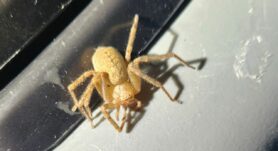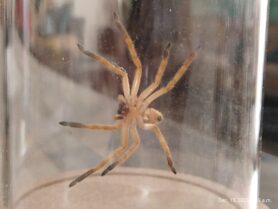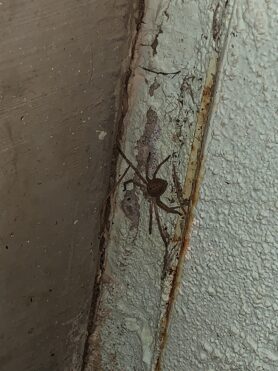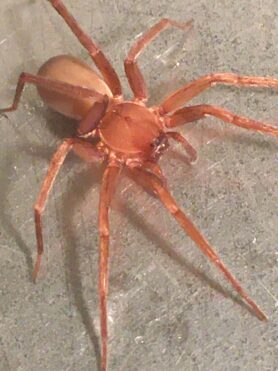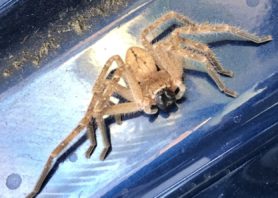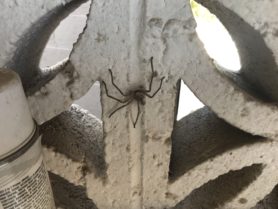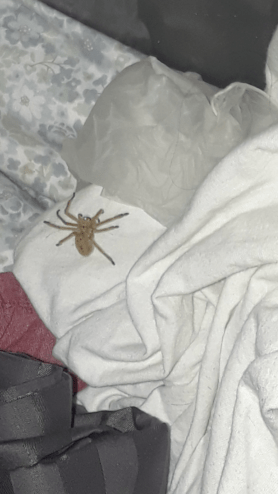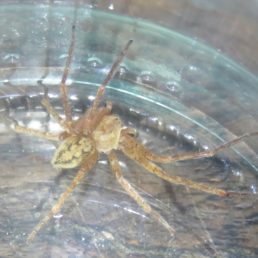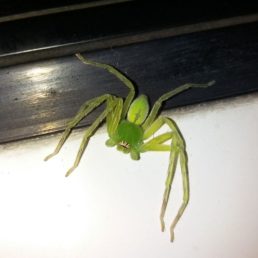Taxonomic Hierarchy
- Kingdom: Animalia
- Phylum: Arthropoda
- Class: Arachnida
- Order: Araneae
- Suborder: Araneomorphae
- Family: Sparassidae
- Genus: Olios
- Species: Olios giganteus
Other Common Names
Giant Crab Spider, Golden Huntsman Spider, Huntsman Spider
Author
Eugen von Keyserling, 1884
Primary Colors
Sightings Overview
There have been 47 confirmed sightings of Olios giganteus (Giant Crab Spider), with the most recent sighting submitted on December 20, 2023 by Spider ID member welinbrandin. The detailed statistics below may not utilize the complete dataset of 47 sightings because of certain Olios giganteus sightings reporting incomplete data.
- Web: 17% of the time, Olios giganteus spiders are sighted in a spider web (Sample size: 47)
- Sex: 1 female and 5 male.
- Environment: Olios giganteus has been sighted 32 times outdoors, and 22 times indoors.
- Outdoors: Man-made structure (21). Ground layer (1). Under rock or debris (3). Desert area (7).
Location and Range
Olios giganteus (Giant Crab Spider) has been sighted in the following countries: Canada, United States.
Olios giganteus has also been sighted in the following states: Arizona, California, Nevada, Oregon, Texas.
Seasonality
Olios giganteus has been primarily sighted during the month of March.
- January: 4
- February: 3
- March: 11
- April: 3
- May: 9
- June: 4
- July: 1
- August:
- September: 1
- October: 4
- November: 2
- December: 5
Additional Remarks
- Legs are laterigrade, meaning that they are “twisted” at the base so as to be oriented in a horizontal plane rather than a vertical plane. This gives the spider a decidedly crab-like appearance.
- Total leg span can reach up to 3 inches or more in the larger specimens.
- Chelicerae (jaws) are noticeably dark brown or black and the condyles are orange (a condyle is a small rounded swelling at the base of spider chelicerae).
- Abdomen tan or light orange with a thin black line bordering around the heart mark area.
- Adult males have a black, spiraled (or “coiled”) embolus.
- Egg sac is spun inside a large, spherical retreat (about 25mm in diameter) in which the female spider also resides, guarding the sac and the spiderlings that emerge from it.
- Decades ago, this spider inspired newspaper stories of the “barking spider” in small towns in west Texas, despite the fact that it does not make any noise (Gertsch 1979).
- Many California specimens were initially assigned the name Olios fasciculatus, which is actually an African species. Those specimens are now known to be Olios giganteus.
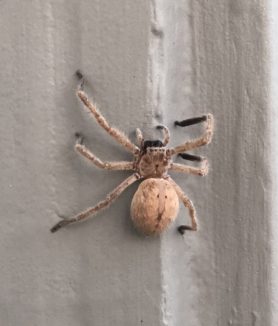 The spider species Olios giganteus, commonly known as Giant Crab Spider, belongs to the genus Olios, in the family Sparassidae. Olios giganteus spiders have been sighted
The spider species Olios giganteus, commonly known as Giant Crab Spider, belongs to the genus Olios, in the family Sparassidae. Olios giganteus spiders have been sighted 